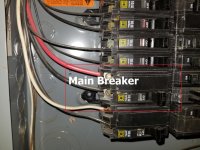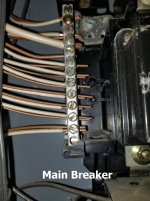joey2point0
Plastic
- Joined
- Oct 15, 2018
New here! Very excited to join to the community. I recently completed my rotary phase convert and WOW! for not ever fiddling with 3 phase before im impressed with how smooth it went, minimal problems and all. Props to Fitch W. amazing instructions!
Im having a hard time grasping this neutral and ground debacle, here is what I have (my brain is a giant list so bear with me):
*220v single phase extension cord that my control box plugs into, it is 6 gage 3 wire(im assuming hot,hot,neutral)
*Neutral is only used to for indicator light inside control box and properly isolated
*3 phase out is a 8g gage 4 wire cable (L1,L2,L3,ground) no ground connected...YET
Do I simply tie the control box frame, motor frame, and 3phase device frame together as a common ground or is the 220v neutral wire incorperated in this as well?
Im having a hard time grasping this neutral and ground debacle, here is what I have (my brain is a giant list so bear with me):
*220v single phase extension cord that my control box plugs into, it is 6 gage 3 wire(im assuming hot,hot,neutral)
*Neutral is only used to for indicator light inside control box and properly isolated
*3 phase out is a 8g gage 4 wire cable (L1,L2,L3,ground) no ground connected...YET
Do I simply tie the control box frame, motor frame, and 3phase device frame together as a common ground or is the 220v neutral wire incorperated in this as well?






